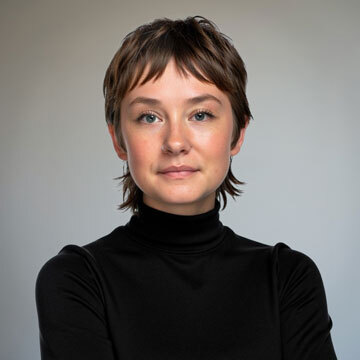



423 Views
2
View In My Room
Open Edition Prints Available:
Select a Material
Canvas
Select a Size
12 x 16 in ($188)
Select a Canvas Wrap
Black Canvas
Add a Frame
No Frame
$188
423 Views
2
Artist Recognition

Artist featured in a collection
ABOUT THE ARTWORK
DETAILS AND DIMENSIONS
SHIPPING AND RETURNS
Wladimir Burliuk, Aleksandra Ekster & David Burliuk by Yury Ermolenko, ("Garden of Wandering Geniuses" project), 2018, double-sided sculpture, 240x197 cm. Wladimir Burliuk (1886 – 1917) was a Ukrainian avant-garde artist (Neo-Primitivist and Cubo-Futurist), book illustrator. Wladimir Burliuk was b...
Year Created:
2018
Subject:
Medium:
Print, Giclee on Canvas
Rarity:
Open Edition
Size:
12 W x 16 H x 1.25 D in
Ready to Hang:
Yes
Frame:
Not Framed
Canvas Wrap:
Black Canvas
Packaging:
Ships in a Box
Delivery Cost:
Calculated at checkout.
Delivery Time:
Typically 5-7 business days for domestic shipments, 10-14 business days for international shipments.
Returns:
All Open Edition prints are final sale items and ineligible for returns. Visit our help section for more information.
Handling:
Ships in a box. Art prints are packaged and shipped by our printing partner.
Ships From:
Printing facility in California.
Need more information?
Need more information?
Yurii Yermolenko
Ukraine
Yurii Yermolenko – A Master of Fine Arts (MFA), author of special, large-scale, monumental picturesque projects, set designer, art director (musical video), music video director, photographer, Facevinyl & RapanStudio Founder and CEO. Born in 1973 Kiev (Ukraine) Lives and works in Kiev. "LIVE PAINTING" One will never forget works painted by artist Yurii Yermolenko. They carry a rave of color, flexibility of motifs, and a very special reality. - Yurii, how long have you been living for painting? Creation of a painting, the plot, the canvas – is this an outburst of emotions, or reflection of your world outlook? - I believe that I began to live for painting even before I was born. The birth of a painting on canvass most of all resembles a rite, when you are led by some creative ecstasy, intuition. It should be noted however that the period preceding the creation of a painting is very interesting. Here, an entirely different scheme works, involving a great deal of analysis, collection of information, anthropological studies, maybe, travelling. - Your paintings are distinguished for intense colors. Does this reflect your temper, or the desire to add colors to everyday routine? - In the first place, it reflects my temper of an artist and a painter. When you paint a picture, it should sound in colors, as a good musical composition, this is the main thing. - You have a unique technique of execution – the images are smudgy and distinct at a time. What stands behind it? - I like it when a painting represents a deep picturesque space, full of special light, as if in a dream, in which, images can breathe and vibrate. - Who, or what, inspires you? - My dear muse, my angel of inspiration protects and helps me. And as far as the projects are concerned, they may be triggered by a beautiful dream or a journey. - What really encourages you – criticism, or commendation? - I am encouraged not by criticism or commendation, but by angels of inspiration. Criticism or commendation take place post factum, as a response to a work of art; both are helpful; the worst thing is when there is no response at all. - Please, tell us about your creative plans. - I will continue experimenting with techniques. By the way, my another project was a pure experiment with "flower-dotted" fabric – this decorative pattern dictates the figurative space. MAGIC WOMAN magazine, Culture (section)
Artist Recognition

Artist featured by Saatchi Art in a collection
Why Saatchi Art?
Thousands of
5-Star Reviews
We deliver world-class customer service to all of our art buyers.
Global Selection of Original Art
Explore an unparalleled artwork selection from around the world.
Satisfaction Guaranteed
Our 14-day satisfaction guarantee allows you to buy with confidence.
Support Emerging Artists
We pay our artists more on every sale than other galleries.
